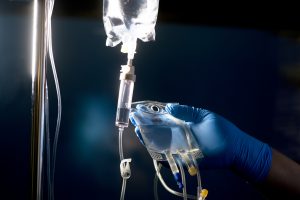Qué Pasa| Unab scientists achieve a crucial breakthrough to reduce the toxicity of chemotherapies
Academics from Universidad Andrés Bello Campus Concepción have developed a family of nanoparticles intended to serve as efficient transporters of drugs used to attack cancer, which would represent a change in the therapeutic approach.
By Tania Merino
One in six deaths worldwide is caused by cancer. The World Health Organization (WHO) statistics report 10 million deaths due to cancer every year. In Chile, the latest reports count over 28,000 deaths per year due to the disease. According to the National Institute of Statistics (INE), in 2019, this pathology ranked the highest on the national mortality table for the first time.
Luis Barraza, a researcher at the Universidad Andrés Bello, Concepción, has devoted many years to improving existing therapies, considering the adverse effects of each one. Through photosensitizing nanoparticles, Barraza’s work seeks a more efficient way of transporting the anticancer drugs to the affected organ and combining conventional chemotherapy with photodynamic therapy.
MAJOR ADVANCES
Through a FONDECYT-ANID project, the UNAB Chemical Sciences academic has already achieved important advances. One is obtaining nanoparticles (NPs) with improved properties for application in chemo-photodynamic cancer therapy. Specifically in basal cell carcinoma, the most common type of skin cancer.
Barraza explains that chemo and radiotherapies are the most widely used strategies for treating the disease, but although their efficacy has improved, problems persist with both methods. There are severe side effects and chemoresistance in chemotherapy, while radiotherapy is restricted due to the cumulative radiation dose.

That is why, beyond finding a cure for the disease, which in many cases is associated with unhealthy lifestyle habits, it is essential to make progress in improving existing treatments to make them more efficient.
A «TAXI» FOR DRUGS
To simplify an explanation of the researcher’s work, the first thing to know is that nanoparticles are, as the name suggests, small particles, about fifty thousand times smaller than a centimeter. They are so tiny that they are not even visible under an ordinary microscope.
«Our goal is for these nanoparticles to be able to transport the anticancer drug. It is like a taxi that takes the drug to the site of pharmacological action, enhancing the chemotherapeutic effect through light excitation (photodynamic therapy),» explains the UNAB academic. «We seek to reduce the drug’s toxicity from the moment the person ingests the drugs or applies an ointment.»
Read article in Qué Pasa in La Tercera
 English version
English version 
